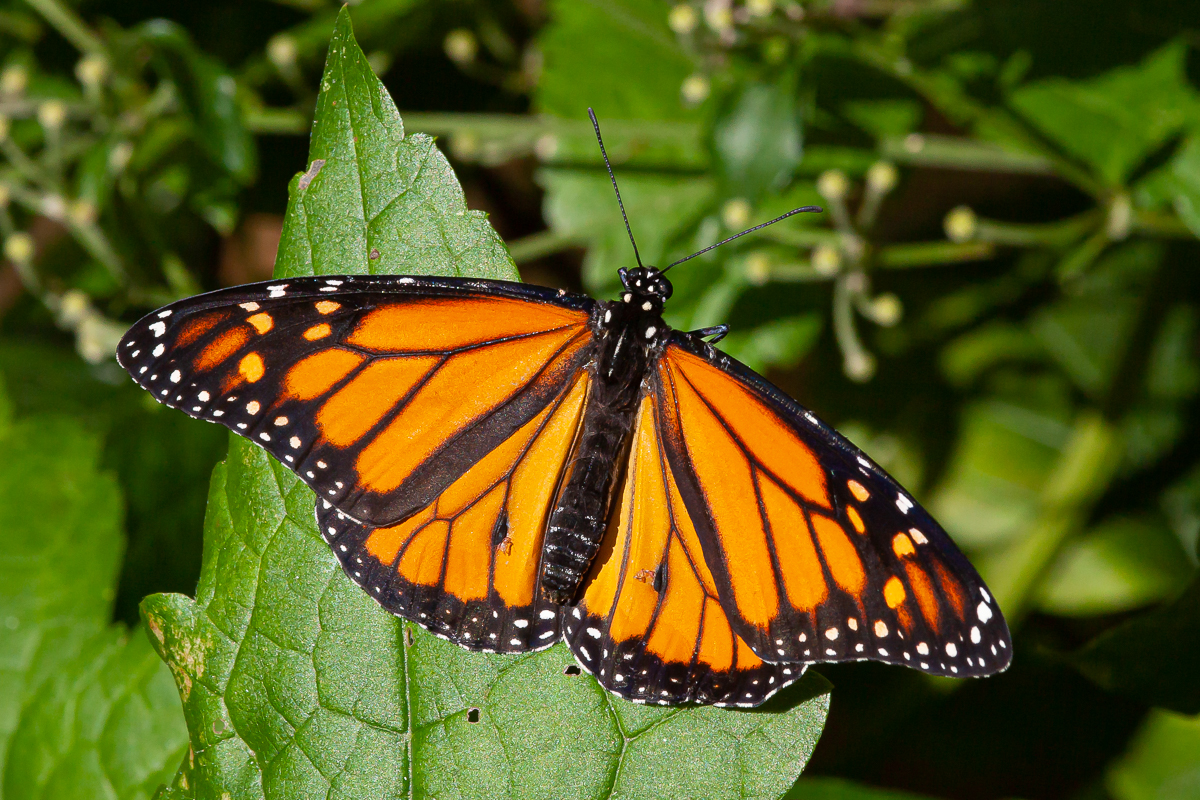
Photo © Peter Eeles
This species is the largest butterfly seen in the British Isles, and is also one of our rarest migrants. This butterfly is known for its ability to migrate across large distances. The migrations in north America are one of the greatest natural phenomena in the world - where the adult butterflies can migrate from as far north as Canada to the overwintering grounds in very specific sites in Mexico, the west coast of California and Florida. The first record of this species in the British Isles, by a schoolboy, was on 6th September 1876 in Neath in south Wales. Although initial records were thought to be the result of accidental transportation by ship, subsequent years, such as 1933 when 40 individuals were caught, meant that this theory was dismissed and that the most-likely cause was a genuine immigration.
The total number of records for the British Isles is less than 500. The most-recent major migration was in 1981 with 135 sightings. Many north American bird species were also recorded that year. However, there is still some question as to the true origin of this immigration since the species is also known from Madeira, southern Spain, Portugal and the Canary Islands, which it reached in 1860 and survives using Asclepias curassavica as its foodplant.
The larva feeds on various Milkweeds (Asclepias species) which are not native to the British Isles, and this explains why the immature stages have not been found in the British Isles. However, in August 1981, a Monarch that had escaped from a nearby butterfly farm was seen to lay on Milkweeds in Kew Gardens. Some of the eggs were collected and reared indoors, where the first adult emerged just one month after the egg had been laid. This species is a rare migrant to the British Isles. Although there are records from many areas, sightings are concentrated in the south and west of both England and Ireland. There is a particular concentration in Cornwall and the Scilly Isles.
Description to be completed.
Description to be completed.
Description to be completed.
Description to be completed.
Description to be completed.